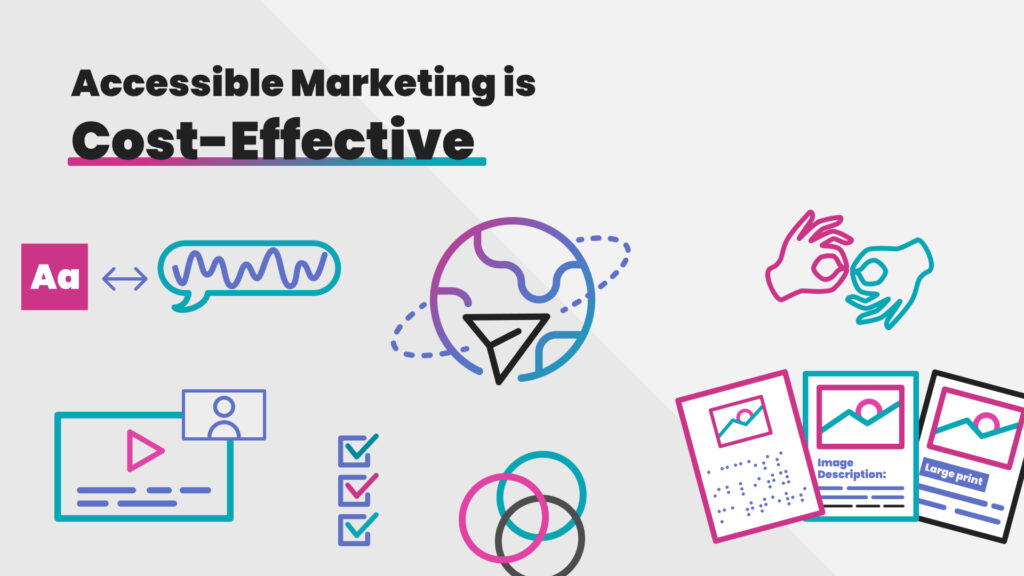
In today’s digital age, accessibility has become an integral aspect of marketing strategies for businesses worldwide. Contrary to common misconceptions, prioritizing accessibility isn’t just about adhering to legal requirements or accommodating a niche demographic; it’s also a savvy financial decision. Let’s look into why accessible marketing is not only ethically imperative but also highly cost-effective.
Understanding the True Cost of Inaccessibility
The ramifications of neglecting accessibility can be severe. From legal repercussions due to non-compliance with accessibility standards to potential loss of customers and damage to brand reputation, the costs can quickly escalate. According to studies cited by The Paciello Group, a leading accessibility consultancy, businesses that fail to prioritize accessibility may face legal fees, settlements, and remediation costs, which can far exceed the expenses of proactively implementing accessible design from the outset.
The Cost-Benefit Analysis of Accessible Design
Small Business BC highlights the significant cost-benefit advantages of investing in accessible design. While there may be initial expenses associated with incorporating accessibility features into products, services, or digital platforms, the long-term benefits far outweigh these costs. Businesses that prioritize accessibility often experience improved user satisfaction, expanded market reach, and enhanced brand loyalty. Additionally, accessible designs tend to be more flexible and adaptable, leading to reduced maintenance costs and greater scalability over time.
Unlocking the Potential of Inclusive Marketing
The importance of accessibility goes beyond compliance; it’s about fostering inclusivity and reaching diverse audiences. Inclusion Hub emphasizes that businesses that prioritize accessibility not only cater to individuals with disabilities but also create a more welcoming environment for everyone. By embracing accessibility principles in marketing efforts, businesses can tap into new markets, drive innovation, and differentiate themselves from competitors. Moreover, accessible marketing fosters goodwill among consumers, positioning businesses as socially responsible entities that value diversity and equality.
Gaining a Competitive Edge
In an increasingly competitive business landscape, accessibility can serve as a key differentiator. Companies that invest in accessible marketing gain a competitive edge by making their products and services more accessible to a broader spectrum of users. This inclusivity not only enhances the overall customer experience but also fosters brand loyalty and positive word-of-mouth referrals. By prioritizing accessibility, businesses demonstrate their commitment to serving all customers equitably, which resonates strongly with today’s socially conscious consumers.
In conclusion, accessible marketing isn’t just a moral obligation; it’s a smart business strategy with tangible cost-effective benefits. By recognizing the true cost of inaccessibility, conducting a thorough cost-benefit analysis of accessible design, and embracing inclusivity in marketing practices, businesses can unlock new opportunities for growth, innovation, and customer engagement. In a world where accessibility is increasingly valued and demanded, investing in accessible marketing isn’t just the right thing to do—it’s also a sound financial decision that can propel businesses towards long-term success.


